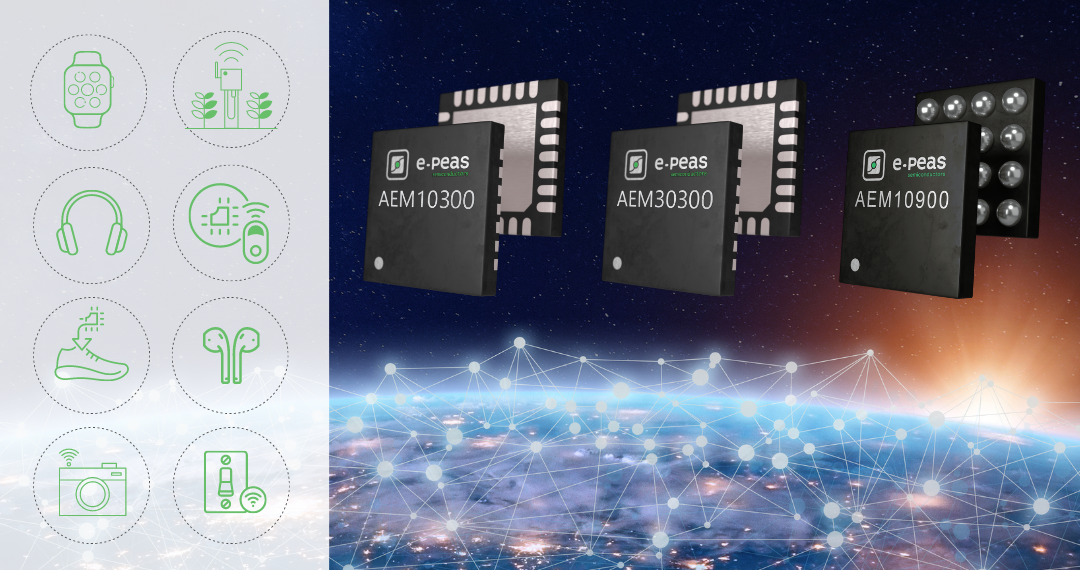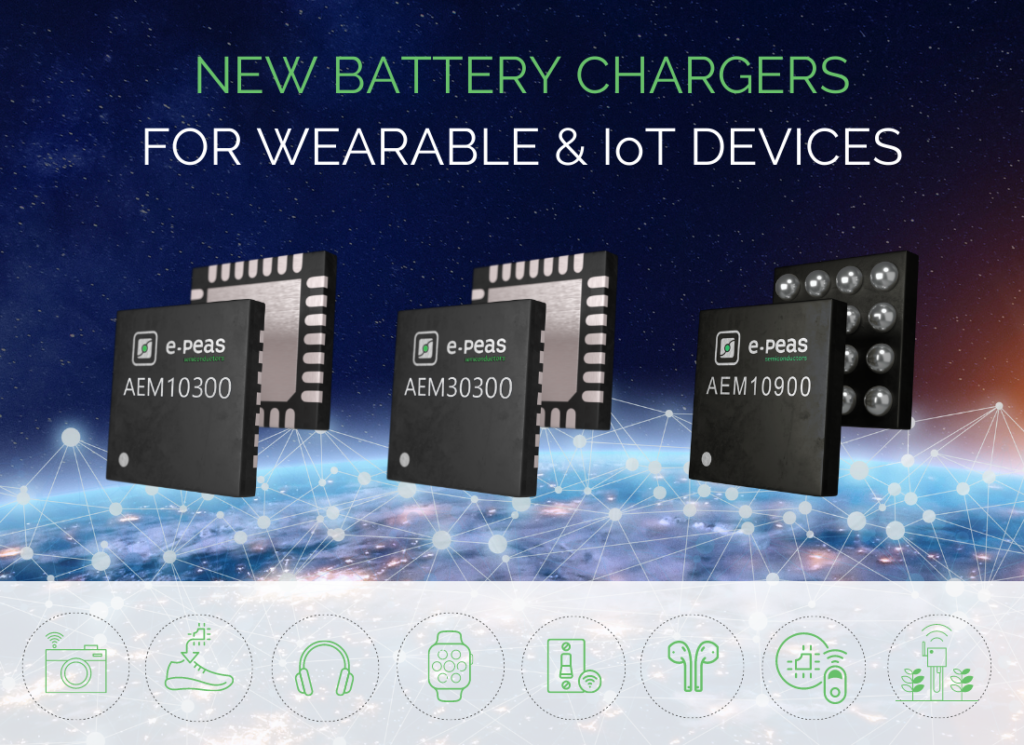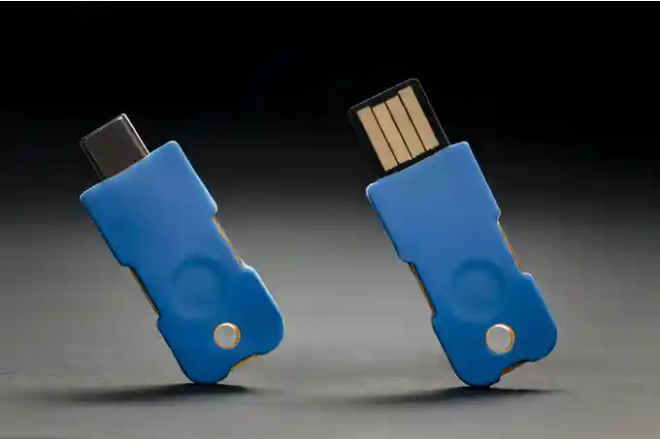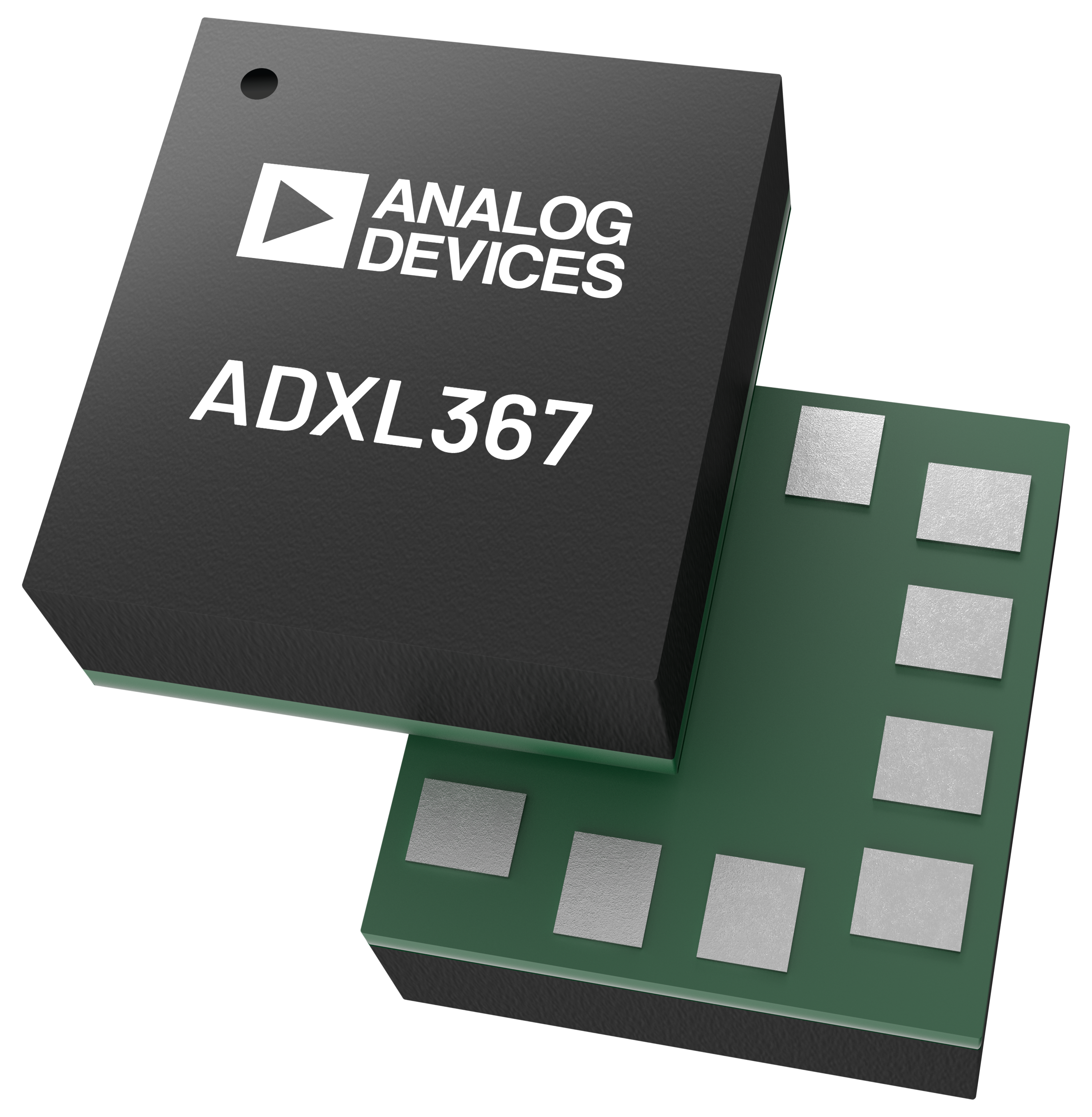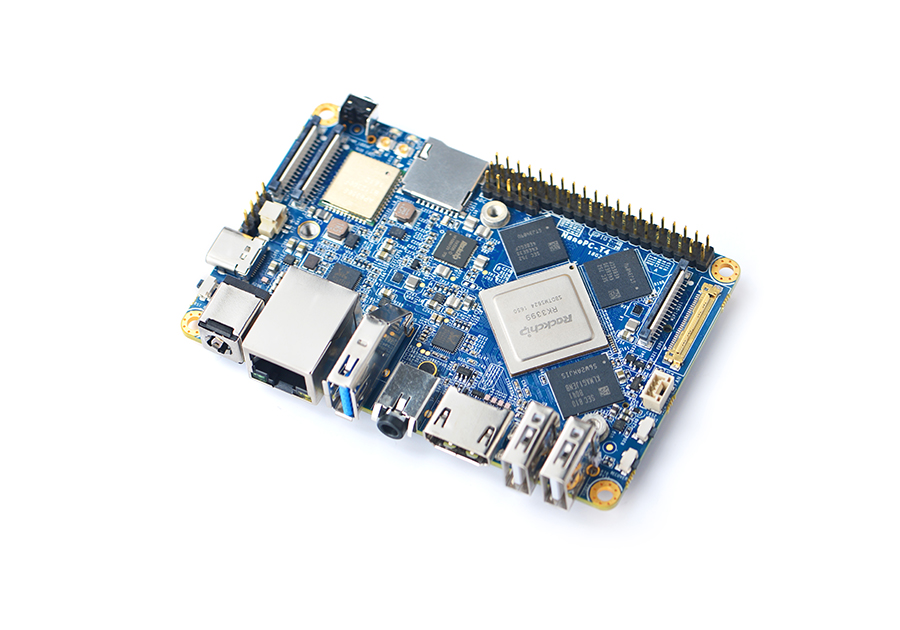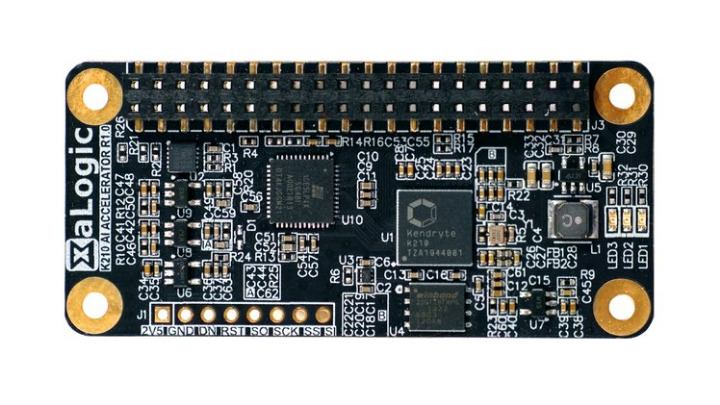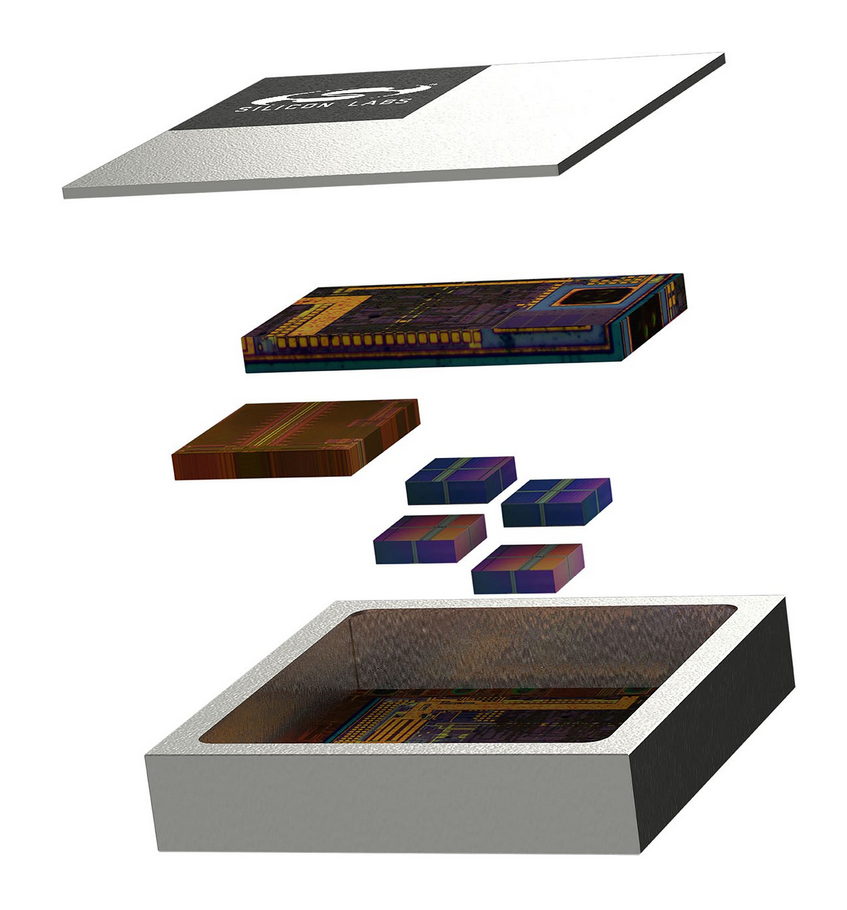Addressing the need for streamlined power management solutions for energy harvesting hardware, e-peas has unveiled a new family of battery charger devices. While the company’s existing power management ICs (PMICs) offer direct power delivery to the application, as well as the charging of energy storage elements (such as Li-Ion batteries or super-capacitors), the AEM10900, AEM10300 and AEM30300 are fully dedicated to the charging function. This allows them to be employed in situations that need a simpler implementation, where there are space or cost constraints that need to be considered. The PMICs are able to achieve zero quiescent current draw from the battery – meaning that if energy harvesting stops for a prolonged period of time, the energy stored in the battery will not be wasted supplying the PMIC.
Working in conjunction with a single-cell photovoltaic panel, the highly integrated AEM10900 PMIC boost converter is optimized for solar-based energy harvesting implementations. Through its super-fast power point tracking (MPPT) functionality specially set for objects in movement, this device is able to ensure that it gets the most energy from the ambient illumination available – so as much as possible can be stored. In addition, it has a 250mV cold start capability, which means it can commence with charging the battery even when light intensities are very low. AEM10900 introduces an I2C interface to minimize the pin count and to offer a larger set of potential configurations. It offers an array of features, including battery thermal protection, a joule counter to let the user know the amount of energy harvested, plus a shipping mode in which the battery cannot be charged. Key applications from this PMIC will be wearable consumer products and body-worn medical monitoring equipment.
Highlights
Ultra-low-power start-up
- Cold start from 250 mV input voltage and 5 μW input power (typical)
Highly efficient energy extraction
- Periodic open-circuit voltage sensing for Maximum Power Point Tracking (MPPT);
- Configurable MPPT ratios of 35, 50 and from 60 to 90% by 5% steps;
- Constant impedance matching (QFN package only);
- Configurable MPPT sensing timing and period;
- MPPT voltage operation range from 115 mV to 1.5 V.
Flexible energy storage management
- Selectable overdischarge protection from 2.8 V to 4.0 V;
- Selectable overcharge protection from 3.0 V to 4.8 V;
- For any type of rechargeable battery;
- Battery charge can be disabled, e.g. during transportation.
Configuration and communication
- Static configurations available through configuration pins (depending on package) or I2C interface;
- I2C interface to set system functionalities and read system information;
- I2C mode up to Fast Mode Plus.
Configurable thermal protection
- From -40°C to 125°C with accuracy below 1.5°C up to 60°C.
Power meter
- Energy transfer or pulse counter mode.
Smallest footprint, smallest BOM:
- WLCSP16 2×2 mm or QFN28 4×4 mm;
- Only three passive components.
AEM10300 and AEM30300 PMICs both have built-in ultra-low power DC/DC converters supporting operation over an input voltage range that covers 100mV to 4.5V. Adaptive energy management permits these devices to automatically switch between boost, buck-boost and buck operational configurations as deemed appropriate. This ensures that optimal energy transfer is always maintained between the respective inputs and the storage element.
Key Features:
- 250mV cold start capability, which means it can commence with charging the battery even when light intensities are very low.
- MPPT voltage operation from 115mV to 1.5V
- I2C interface to minimize the pin count and to offer a larger set of potential configurations
- Battery thermal protection functionality
- Joule counter to let the user know the amount of energy harvested
- Support any type of rechargeable battery
- Shipping mode in which the battery cannot be charged
- Small BOM with only three passive components
- Available in WLCSP16 (2×2 mm) & (QFN28 4×4 mm)
All these new battery chargers PMICs only require three external components. This means that energy harvesting functionality can be added while keeping the bill-of-materials costs low and taking up very little board space.
“As e-peas’ business matures and we continue to gain ever greater commercial traction, we must look to provide a more expansive portfolio of PMIC options to the market,” states Geoffroy Gosset, CEO & co-founder. “Following on from in-depth consultations with our customer base, it became clear that having compact solutions for charging only was going to be of real value. With these newly introduced devices we will now be able to better serve the wearable, healthcare, consumer and industrial sectors, supporting them with technology that fully meets their needs in terms of performance, size and price point.”
The AEM10300 and AEM30300 PMICs are both supplied in a 28-pin QFN package format (with (4mm x 4mm dimensions), while the AEM10900 is available in either the 28-pin QFN package or a 16-pin WLCSP (with 2mm x 2mm dimensions) package for even greater space savings.
more information: E-PEAS





